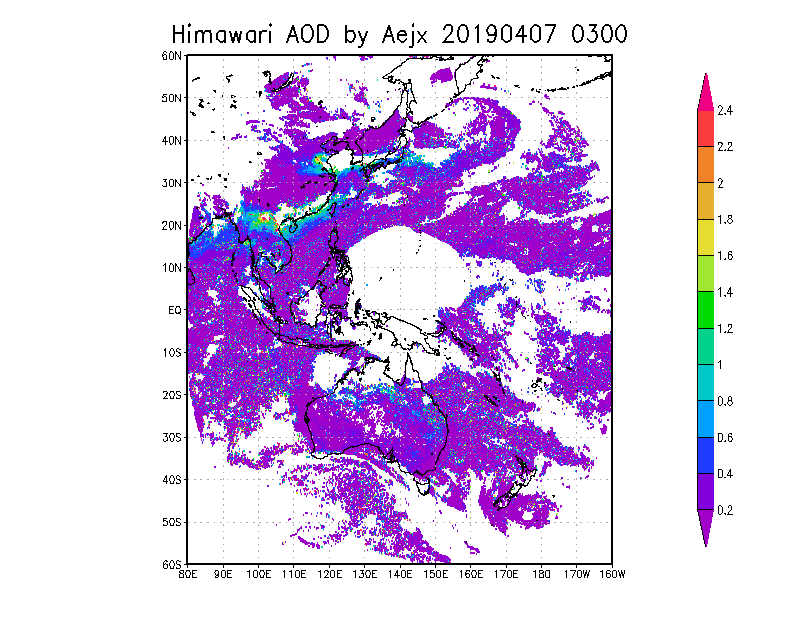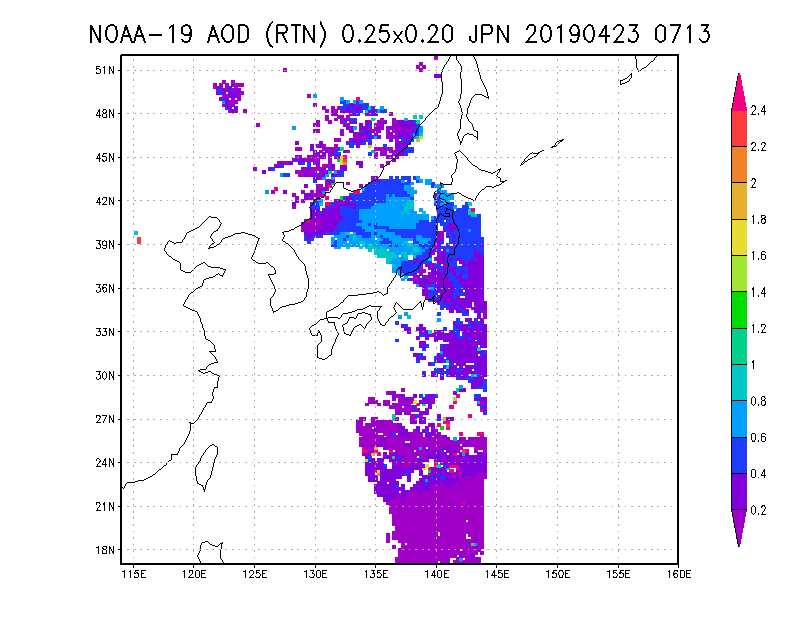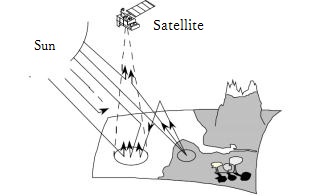Aerosol Optical Thickness (AOT)
Introduction
Microscopic particles floating in the atmosphere are called aerosols. Aerosols in the atmosphere absorb and scatter solar radiations, thereby affecting radiant flux density. For this reason, information related to aerosols are regarded to be important in predictions of climate change. Aeolian dusts, which have been gaining attentions in recent years for their emergence, are also one kind of aerosols. In MSC, the aerosol optical depth is calculated for the sea area around Japan, based on data from visible sensors of "Himawari" and " NOAA". The data are used for real-time monitoring of aerosols dispersals in forms mainly of Aeolian dusts, volcanic ashes, and smokes arisen from forest fires.
Aerosol Optical Depth
The visible sensors of satellites observe reflecting/scattering lights from microscopic components of atmosphere and ground surface. As aerosols increase in the atmosphere, reflecting/scattering lights observed generally by satellites also increase. However, the process of reflection/scatter are not simple. For instance, lights radiated by aerosols in the atmosphere can be again reflected on the ground surface, and scattered by other microscopic components in the atmosphere. Therefore, complex calculations of radiation transfer is necessary for the data simulation based on observations by visible sensors of the satellites.
To calculate aerosol optical Depth from observation data of visible sensors of the satellite, strengths of scattering lights from microscopic substances (air molecules, water vapour, ozone etc.) apart from aerosols from the ground surface. Although the reflections from the ground surface vary based on properties of ground surface, precise estimations can be made on the sea surface. Scattered lights from microscopic substances (air particles, water vapour, and ozone etc.) in the atmosphere apart from aerosols can also be obtained by calculating radiation transfer on a proposed vertical distribution. In doing so, the aforementioned complex dispersion process needs to be considered.
The frequency of processing made for Himawari is 66 times a day (every 10 minutes between 23 UTC - 09 UTC), between once and 3 times a day for NOAA (depending on the orbits of the day).
Sample



On Product Use
- The area in the clear weather (the effects of aerosols cannot be extracted in the cloud areas due to prominent reflections and scattering from the clouds)
- The sea area without strong reflections of solar light (i.e. sunglint)
- Height of the sun is not too low (above 20 degrees solar elevation angle)
Real-time data distribution
JMA internal use only.